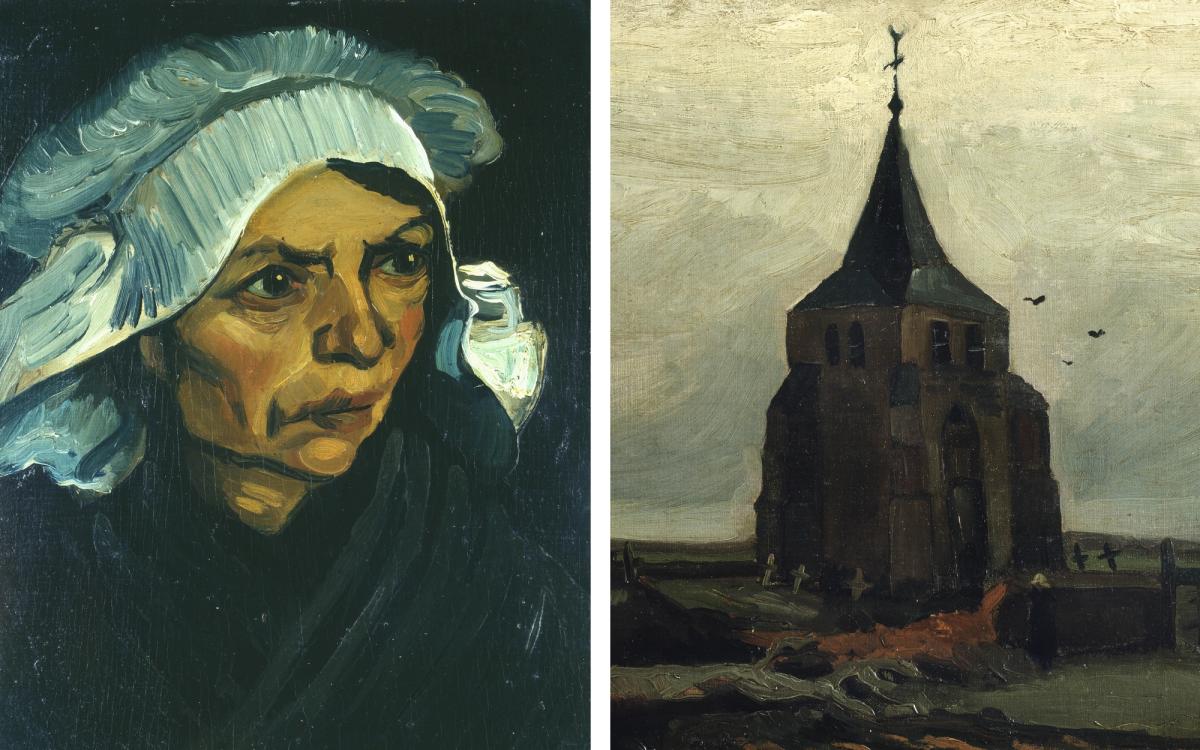The fabulous art collection of Emil Bührle (1890-1956) has long been controversial. He owed his great wealth to the arms trade and bought paintings in questionable circumstances during the Nazi era and the Second World War. Born in Germany, in 1924 he moved to Switzerland, where he ran the country’s largest weapons factory.
Now the spotlight has fallen on two of Bührle’s Van Goghs, which in 2021 went on long-term loan to the Kunsthaus Zurich, along with the rest of his collection.

Van Gogh’s Head of a Peasant Woman (March 1885)
Bührle Collection, on long-term loan to Kunsthaus Zurich
A potential claim has recently emerged for Head of a Peasant Woman (March 1885). The painting dates from when Vincent was living with his family in the village of Nuenen, in the south of the Netherlands. It was among the studies which soon led to the creation of his first masterpiece, The Potato Eaters (April-May 1885).
In the mid 1920s Head of a Peasant Woman was bought by Gustav Schweitzer, a Berlin collector and director of a paper factory. Although he offered it at auction in 1932, it failed to sell and is presumed to have been returned to him. It is unclear whether the painting remained with Schweitzer after the Nazis seized power the following year, and this is currently being researched. In the 1930s he also owned Van Gogh’s Plaster Statuette: Female Torso (early 1887), which was offered at Sotheby’s in 2008 (but went unsold) and is now at the Menard Art Museum in Komaki, Japan.
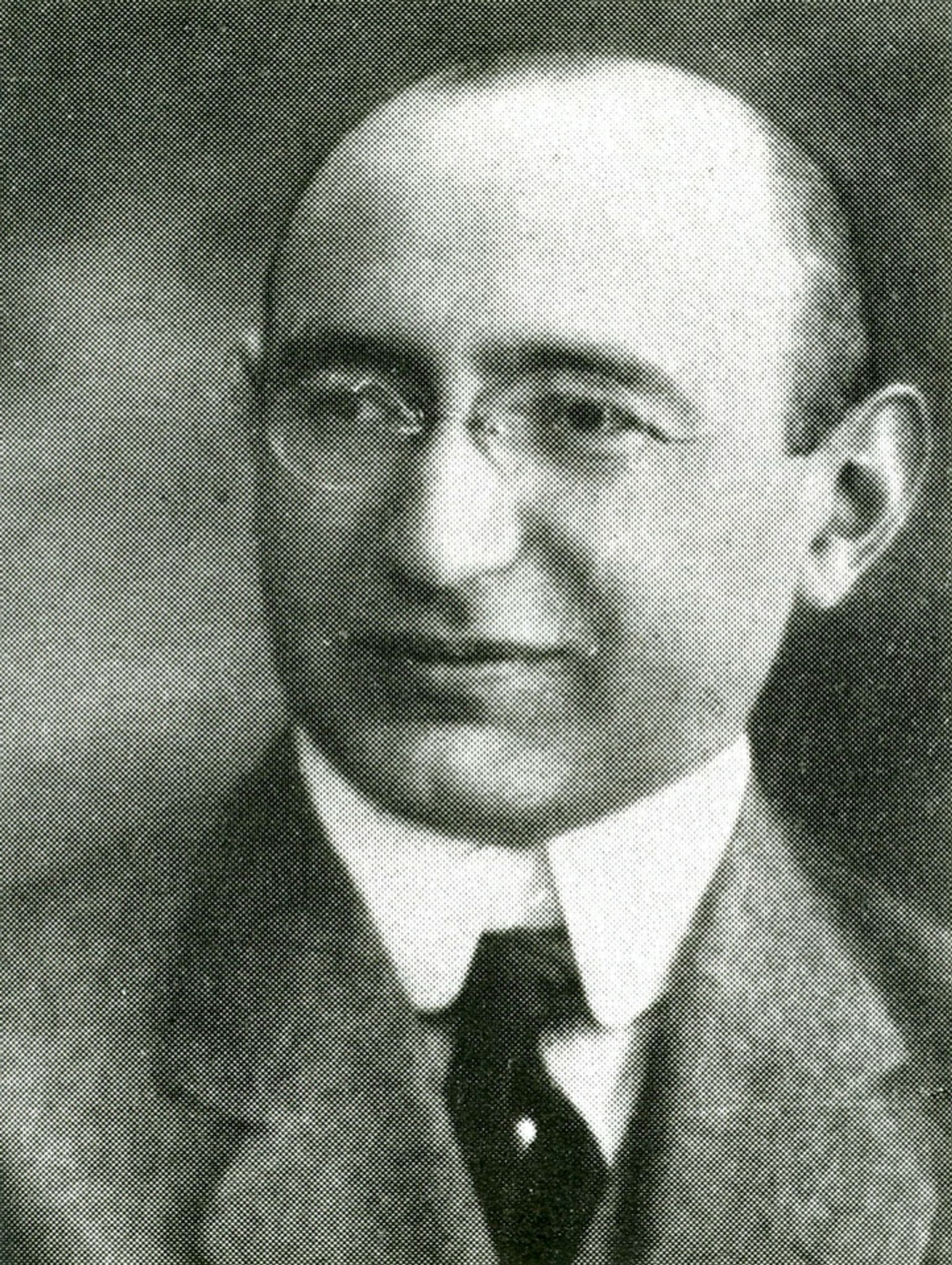
Gustav Schweitzer (1931)
Schweitzer, who was Jewish, fled to France in 1934 or 1935. In 1938 he moved to the Philippines, where he died the following year. By this time his German citizenship had been revoked and his property in Berlin confiscated. It is unknown what happened to Head of a Peasant Woman in the late 1930s (and whether Schweitzer might have taken it to France). All that is certain is that the Van Gogh was sold to Bührle in 1941 by the Zurich-based Galerie Aktuaryus.
A June report on potential claims on the Bührle collection by the independent expert Raphael Gross admits that “it remains unclear whether the Head of a Peasant Woman was taken from Gustav Schweitzer after 1933 because of persecution”. Gross then adds: “The history of the [Van Gogh] artwork is still so little researched that even the in-depth examination was unable to provide conclusive clarification.”
The Head of a Peasant Woman is still on display at the Kunsthaus Zurich while further research is underway about its whereabouts from 1932 to 1942. Victor Schmid, a trustee of the Bührle Collection, tells us that they recently “met with a member of the family”, presumably a descendant of Schweitzer, but at this stage the person simply expressed interest in the history of the painting.
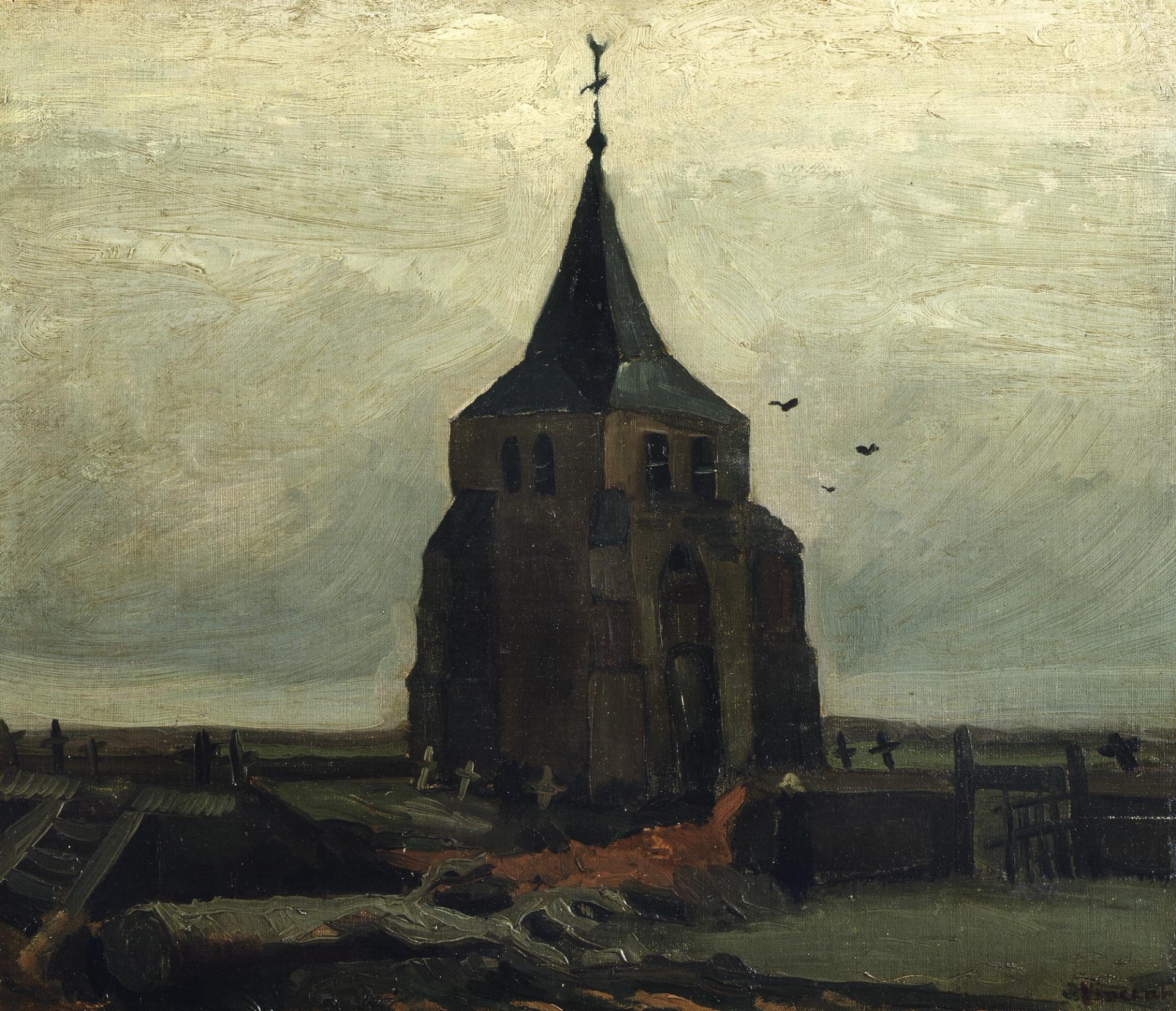
Van Gogh’s The Old Tower (July 1884)
Bührle Collection, on long-term loan to Kunsthaus Zurich (but recently returned to the Bührle Foundation)
Another of Bührle’s Van Goghs has actually been removed from display, because of Nazi-era concerns. This is The Old Tower (July 1884), which he painted in Nuenen a year before Head of a Peasant Woman. The landscape was taken down from the Kunsthaus display in June and is now in store, along with four other Bührle paintings which have questionable Nazi-era provenances, all by other artists.
The Old Tower, which had been in the Netherlands, was bought by the dealer Walter Feilchenfeldt in Amsterdam in 1937. He had earlier operated in Berlin, but being Jewish was persecuted after the Nazis came to power in 1933. He left later that year for the Netherlands. When war broke out he was in Switzerland, where he remained. In 1942 The Old Tower was bought by the Swiss dealer Fritz Nathan, who sold it to Bührle three years later, just after the war ended, in November 1945.
Following wider guidelines on handling Nazi-era looted art which were accepted internationally earlier this year, the Bührle Foundation is now in discussions with Feilchenfeldt’s heirs. These include his son, also named Walter, who is a retired Zurich dealer and Van Gogh specialist.
Five more Van Goghs in the Bührle Collection have so far not been subject to Nazi-era claims and remain on display at the Kunsthaus Zurich. The Sower has just come on loan to London’s National Gallery, for the Van Gogh: Poets & Lovers exhibition. According to the Bührle Foundation, “there are no provenance issues with these five paintings”.
The Kunsthaus currently hosts a display of 115 Bührle paintings. These are presented in A Future for the Past, The Bührle Collection: Art, Context, War and Conflict (until end 2025), which examines the dilemmas created by the acquisition of these works.
Other Van Gogh news
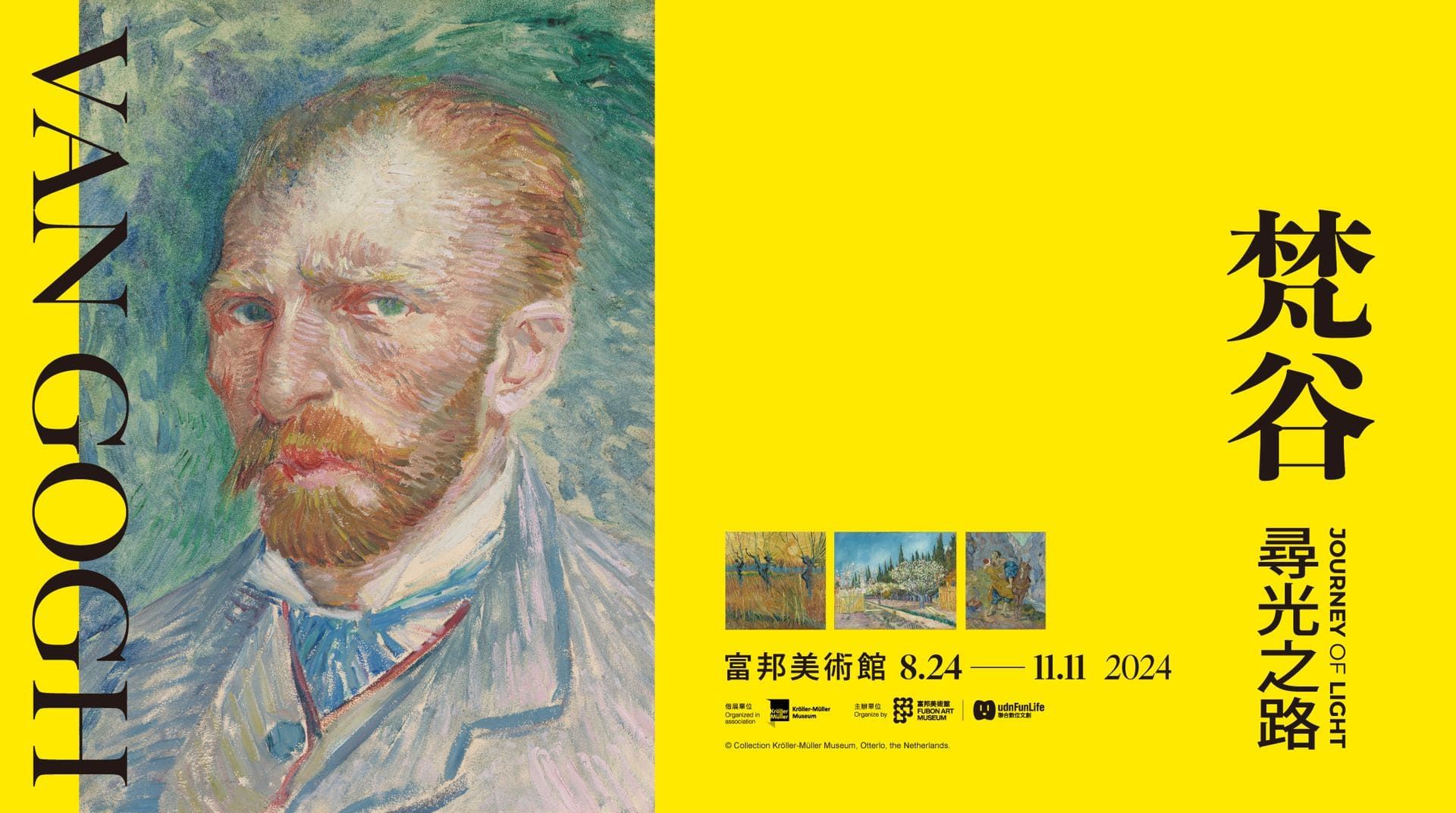
Publicity for Van Gogh: Journey of Light, Fubon Art Museum, Taipei (until 11 November)
Fubon Art Museum
- The Fubon Art Museum in Taipei, Taiwan, has just opened its exhibition Van Gogh: Journey of Light (until 11 November), all on loan from the Kröller-Müller Museum in Otterlo, in the Netherlands. The Taipei museum, set up by the Fubon financial company, opened in a Renzo Piano-designed building in May.
- The National Gallery’s exhibition Van Gogh: Poets & Lovers opens tomorrow (14 September) and runs until 19 January 2025.
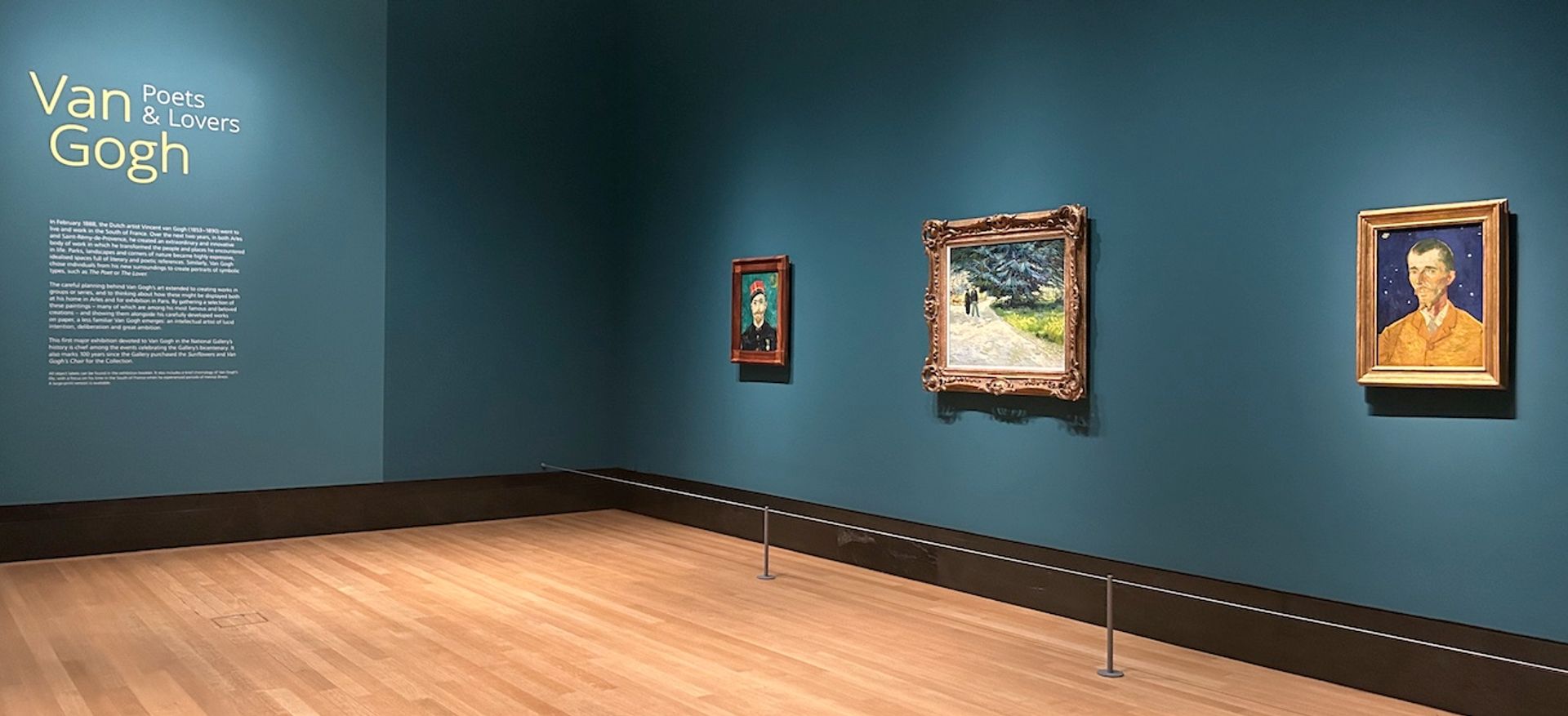
The opening room of Van Gogh: Poets & Lovers, National Gallery, London (until 19 January 2025)
The Art Newspaper


